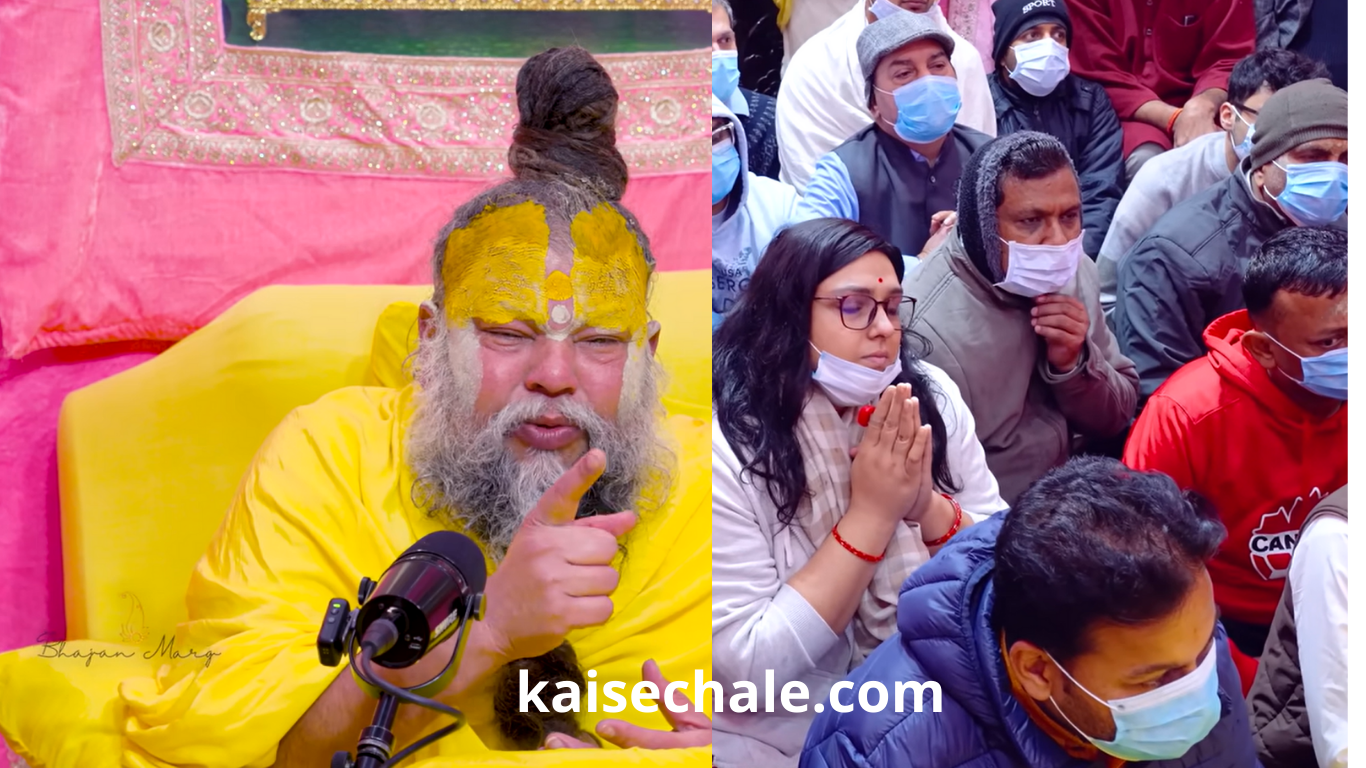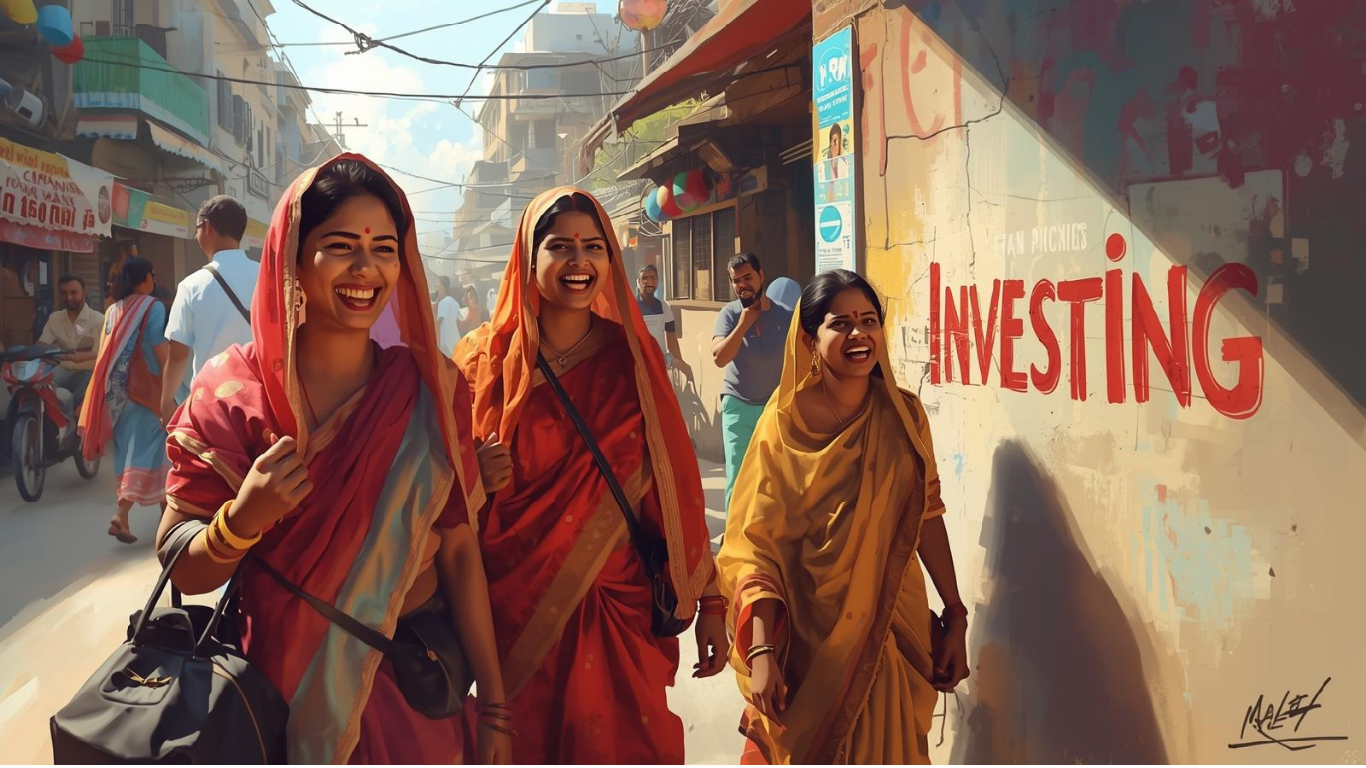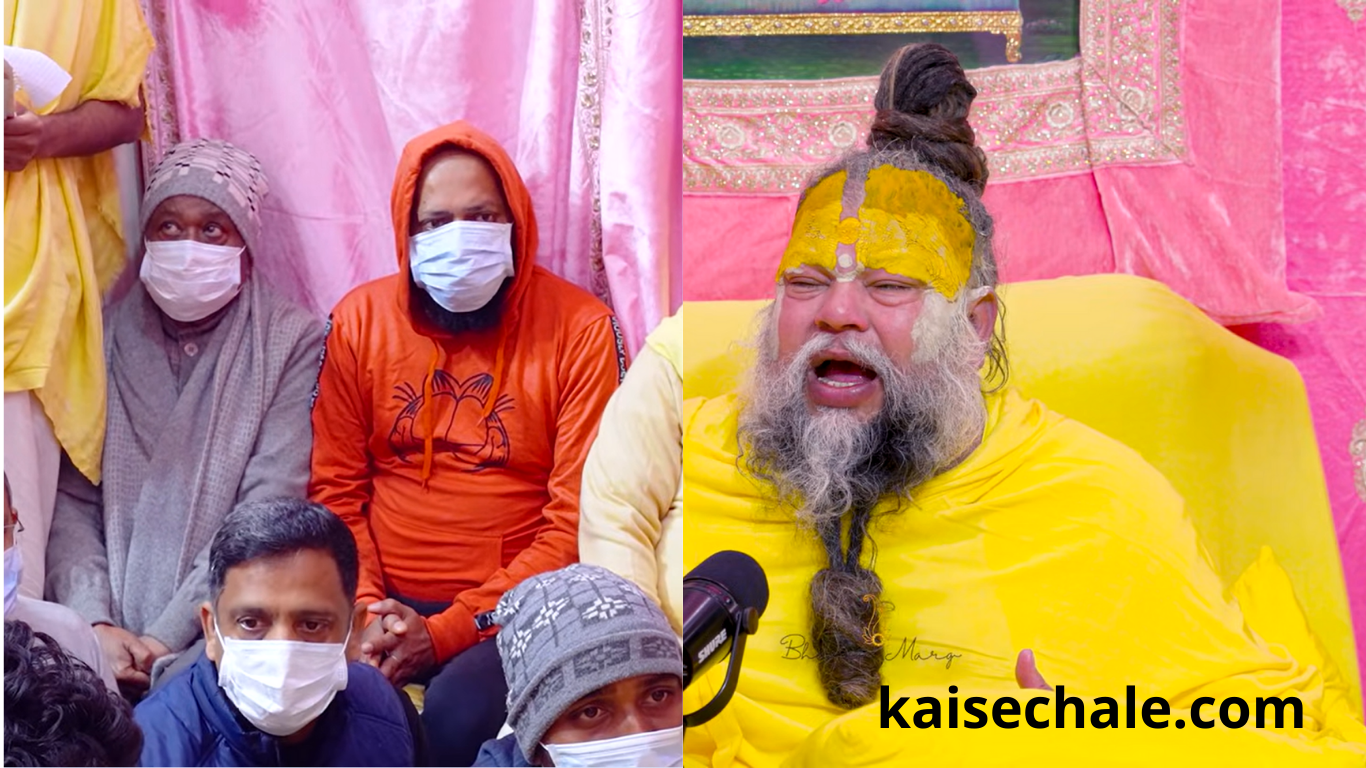
#OTTPornBan #IndianSociety #SocialMorality #DigitalCensorship #OTTPlatform #FamilyValues #IndianGovernment #CulturalImpact #OnlineSafety
Hindi Article
OTT पोर्न पर सरकार का बैन: समय पर लिया गया फैसला
इंटरनेट और डिजिटल प्लेटफार्म ने खूब तरक्की की। घर-घर में स्मार्टफोन, हाई-स्पीड इंटरनेट, और OTT (Over the Top) प्लेटफॉर्म जैसे Netflix, Amazon Prime, Ullu, Alt Balaji आदि ने मनोरंजन की नई परिभाषा गढ़ दी। लेकिन इसी के साथ, OTT प्लेटफार्म का पोर्न कंटेंट, अश्लीलता और पारिवारिक मूल्यों का ह्रास भी उजागर हुआ। सरकार का हालिया फैसला कि OTT पोर्न और अत्यधिक अश्लील कंटेंट को बैन किया जाए, पूरे देश में चर्चित हो रहा है।
समस्या कहाँ से शुरू हुई?
OTT प्लेटफार्मों पर शुरुआत में फिल्में, वेब सीरीज, डाक्युमेंटरी आदि दिखाई जाती थीं। कुछ समय बाद इन प्लेटफार्म्स पर अश्लीलता की बाढ़ आ गई। हर दूसरे-तीसरे शो में खुलेआम नग्नता, विवाहेतर संबंध, घर की भाभी-देवर, ससुर-बहू जैसे रिश्तों को दूषित करने वाले कंटेंट दिखाई देने लगे। कहानी में पारिवारिक संबंधों में व्यभिचार, धोखा, लिव-इन, जिस्मानी संबंध सामान्य बना दिया गया।
नई पीढ़ी के लिए यह सब ‘नॉर्मल’ बनने लगा। वहीं, गृहस्थ जीवन और पुराने मूल्यों को मानने वाले परिवारों के लिए यह अपमानजनक और असहनीय था। बच्चों के लिए यह प्लेटफार्म सीखने का या प्रेरित होने का माध्यम था, वहीँ कच्ची उम्र में गलत दिशा व विचारों का बीजारोपण भी हो रहा था।
OTT पोर्न क्यों था इतना खुलेआम?
OTT यानी Over The Top प्लेटफार्म, जो सीधे इंटरनेट पर चलते थे, शुरुआत में इनके लिए कोई सेंसरशिप या सेंसर बोर्ड नहीं था। इन प्लेटफार्म्स पर साधारण फिल्मों के साथ-साथ खुलेआम अश्लील वेब सीरीज, शॉर्ट फिल्म्स और पोर्नोग्राफिक कंटेंट रिलीज होना शुरू हुआ।
बहुत से ‘नामी-गिरामी’ अभिनेता, अभिनेञ फार, फिल्म निर्माता भी पैसों की लालच या सोशल मीडिया में ‘वायरल’ होने के चक्कर में ऐसे कंटेंट से जुड़ते गए। महिलाओं व युवाओं का ‘शरीर’ केवल बिकाऊ वस्तु बना दिया। गाँव, शहर, कस्बे हर जगह यह समस्या पहुँच गई।
परिवारों में अश्लीलता का प्रभाव
घर में हर सदस्य के पास स्मार्टफोन, जैसे ही किसी OTT का सब्सक्रिप्शन लिया या एक क्लिक में अपलोड कंटेंट चालू – टीनएजर्स, युवा, यहां तक कि छोटे बच्चे भी इस ‘खुली अश्लीलता’ की चपेट में आ जाते। परिवार में ‘फिल्टर’ करना या बच्चों पर निगरानी रखना लगभग असंभव हो गया था।
OTT की वेब सीरीज में बेशर्मी की सारी हदें पार की जा रही थीं। महिला-पुरुष रिश्तेः माँ-बेटे, पिता-पुत्री, देवर-भाभी, सास-दामाद, पड़ोसन, अध्यापक-विद्यार्थी – सबको बदनाम और दूषित प्रस्तुत किया जाने लगा। यह न केवल मनोरंजन की आत्मा को मार रहा था, बल्कि भारतीय संस्कृति और परिवार व्यवस्था का भी अपमान था।
व्यभिचार को क्यों बताया गया ‘महापाप’
भारतीय सांस्कृतिक, धार्मिक और वैदिक ग्रंथों में व्यभिचार, अश्लीलता और अनैतिक संबंधों को महापाप कहा गया है। वेदों, उपनिषदों और पुराणों सहित हर धर्म शास्त्र में बाहरी संबंधों, शरीर की व्यर्थता और परिवार की मर्यादा पर स्पष्ट रूख है।
OTT ने पोर्न और अश्लीलता को न केवल सामान्य बना डाला, बल्कि उसे ‘Bold’, ‘Modern’, ‘Freedom to Choose’ आदि मैस्कुलिन-फेमिनिस्ट शब्दों की आड़ में प्रस्तुत किया। ‘रिलेशनशिप एक्सप्लोरेशन’ के नाम पर बेटे-माँ, नौकर-घर मालकिन, डिलीवरी ब्वॉय, बॉस-सेक्रेटरी के किस्से परोसना फैशन बन गया था।
मानसिक स्वास्थ्य पर प्रभाव
इस खुले अश्लील कंटेंट ने समाज में अनेक विकार पैदा किए:
-
किशोरावस्था में यौन सोच में विकृति
-
मानसिक तनाव, FOMO (Fear of Missing Out)
-
पारिवारिक कलह, तलाक, रिश्तों की नींव कमजोर
-
बच्चे पर गलत असर, सेक्स एडिक्शन या गलत आदतें
-
महिलाओं के प्रति दुर्भावना, शोषण बढ़ा
शोध बताते हैं कि पोर्न देखने वाले युवा/बच्चे व्यवहार में उतावलापन, शॉर्ट टेम्पर, दोषपूर्ण अपेक्षाएं और असंतोषदी भावना पाल लेते हैं। OTT अश्लीलता ने इसको और सहज बना दिया।
महिलाएं-पुरुष, कलाकार इस ‘अंधेरगर्दी’ में क्यों उतरे?
मीडिया में नाम, पैसा, ग्लैमर – इन सबका असर उद्योग से जुड़े हर शख्स पर पड़ता है। OTT की लोकप्रियता और पोर्न वॉचिंग के डेटा ने निर्माताओं, निर्मात्रियों और कलाकारों को इस ‘शॉर्टकट’ मोह में डाल दिया कि ‘बोल्ड’ बन कर रातोंरात ‘स्टार’ बन जाओ।
एक्ट्रेस, एक्टर से लेकर छोटे-छोटे गाँव के न्यूकमर भी इस इंडस्ट्री में कूद पड़े। नाम, शोहरत, पैसे और फॉलोवर की होड़ में किसी ने मानवीय गरिमा, संस्कृति या परिवार की भावनाओं की परवाह नहीं की।
सरकार का बैन: क्यों और कैसे?
सरकार और कोर्ट दोनों पर लगातार जनआक्रोश, धार्मिक संगठनों की शिकायतें, बाल संरक्षण संस्थाओं की warnings आने लगी। पुलिस रिकॉर्ड में इस तरह के कंटेंट को लेकर परिवारों में विवाद, तलाक, हिंसा के मामलों की संख्या बढ़ रही थी।
बच्चों के यौन शोषण, पोक्सो एक्ट के उल्लंघन, सार्वजनिक अभद्रता और साइबर ब्रीच नई समस्या बन गई थी। अंततः सरकार ने इंटरनेट नियमों में संशोधन कर OTT पोर्न, अत्यधिक अश्लीलता, और समाज विरोधी कंटेंट/मूवीज को बैन करने का बड़ा फैसला जारी किया।
क्यों यह फैसला स्वागत योग्य है?
-
पारिवारिक मूल्यों की सुरक्षा
-
बच्चों और किशोरों को गलत चीजों से बचाव
-
सामाजिक गरिमा, संतुलित मनोरंजन
-
कलाकारों, निर्माताओं की जिम्मेदारी तय
-
समाज का मानसिक स्वास्थ्य सुदृढ़ करना
-
पश्चिमी संकृति के अंधानुकरण से छुटकारा
-
भारतीय महिला-पुरुष का वास्तविक सम्मान
यह निर्णय पहले क्यों नहीं आया?
भारी OTT इंडस्ट्री लॉबी, ऑपरेटरों के विदेशी संबंध, तकनीकी जटिलताएं और नई कानूनी पहलुओं के कारण कई साल लगे। कई नेताओं, फिल्मी कलाकारों और इंटरनेट दिग्गजों के कारण भी यह ‘मामला’ लटका रहा। जनता की बार-बार माँग, सुप्रीम कोर्ट की हिदायत और बढ़ती अश्लीलता के चलते आखिरकार सरकार को फैसला लेना पड़ा।
भारतीय समाज के लिए आगे की राह
यह बैन केवल शुरुआत है। असली काम है OTT प्लेटफार्मों की जवाबदेही तय करना, सेंसर बोर्ड जैसे नियंत्रण लागू करना, ‘एडल्ट’ कंटेंट की कानूनी सीमाएं बनाना, और समाज में नैतिक शिक्षा का विस्तार करना।
-
बच्चों को सही-गलत की शिक्षा दें
-
परिवार में संवाद-बातचीत बढ़ाएं
-
इंटरनेट का सुरक्षित उपयोग समझाएँ
-
कलाकार, निर्माता सही विषय चुनें
-
तकनीक से आत्मनियंत्रण करें
-
फेक या शॉर्टकट ग्लैमर से बचें
निष्कर्ष
OTT पोर्न पर सरकार का बैन समाज के लिए जरूरी कदम है। यह न केवल कानून व्यवस्था, बल्कि पारिवारिक, मानसिक, और सांस्कृतिक संरक्षण के लिए सशक्त उपाय है। इस डिजिटल युग में मनोरंजन केवल मजेदारी नहीं, बल्कि समाज का चरित्र फैसला भी करता है। सही दिशा में उठाया गया हर कदम भविष्य को सुरक्षित और मूल्यव्यवस्था से जोड़ता है।
English Article
TT Porn: Social Crisis, Morality, and a Needed Step
The rise of digital technology has brought a revolution in entertainment, most significantly due to OTT (Over-The-Top) platforms like Netflix, Amazon Prime, Ullu, Alt Balaji, etc. While initially these platforms offered a breath of fresh air to the Indian audience, providing global content at their fingertips, they also exposed an ugly truth: a surge of pornographic, highly vulgar, and family-corrupting material.
The recent decision of the Indian Government to strictly ban OTT porn and curb extreme vulgarity is being welcomed across the nation. But why was this ban necessary? Why do many believe it should have happened long ago? And what does it convey about society, culture, and digital morality?
The Root of the Problem
From their inception, OTT platforms promised freedom of artistic expression and storytelling unfettered by the Indian Censor Board. However, this creative liberty slowly mutated into an unregulated playground for releasing extremely vulgar, sexually explicit, and even pornographic content.
What began as occasional ‘adult comedy’ soon morphed into mainstream series and films where marital, family, and even taboo social relationships were shown in an extremely distorted and obscene light. Stories depicting sexual relationships between a maid and her employer, a boss and secretary, delivery boys, in-laws, and even more shocking incestuous relationships started flooding the digital entertainment sphere.
This normalization of moral and ethical boundaries, especially around family, upset millions. For many young and impressionable viewers, these interactions became ‘normal’ or even desirable, while traditional family units struggled to keep up with this cultural onslaught.
Why Was OTT Porn So Rampant?
India’s traditional film industry is regulated by the Central Board of Film Certification. But OTT platforms, operating purely on the Internet, were initially beyond the purview of any censor. With virtually no oversight or restrictions, content creators started pushing boundaries in search of viral popularity and quick monetary gain.
Many well-known actors, filmmakers, and even social influencers, hungry for fame and easy money, started associating themselves with brazenly ‘bold’ and explicit projects. The human body, especially female sexuality, became a means for cheap thrills and higher viewership. Village, town, and urban youth – everyone with a smartphone and internet access was exposed overnight.
How Did Families Suffer?
With affordable mobile data and easy-to-use OTT apps, even a child or a teenager could, with the click of a button, begin binge-watching explicit web series or films. Constant exposure to sexually charged content made it nearly impossible for parents and elders to monitor or filter what their family members – especially minors – were viewing.
Kissing, nudity, extramarital affairs, incestuous themes, and illicit relationships between relatives (mother-son, father-daughter, sister-in-law/brother-in-law, teacher-student, househelp/employer) were shown without any moral or emotional consequences. These were not only normalizing but actually glamorizing immorality and disrespect toward real-life family bonds.
Adultery: Why Called Greatest Sin?
Across Indian scriptures, including Vedas, Upanishads, and Purāṇas, adultery, sexual perversion, and the breaking of family trust are considered among the greatest sins. These texts teach the importance of fidelity, dignified relationships, and safeguarding societal harmony.
However, OTT series often presented infidelity, open relationships, one-night stands, taboo affairs, and even outright pornography as symbols of modernity and personal choice. Shock value, not artistic value, became the new yardstick.
Impact on Mental Health
Repeated exposure to explicit content has well-documented psychological impacts:
-
Early sexualization of children and adolescents
-
Distorted expectations from relationships
-
Increased anxiety, frustration, and even sexual addiction
-
Breakdown of trust and communication within families
-
Objectification of women and normalization of harassment/abuse
Several studies warn that teenagers consuming high levels of such content are more likely to develop negative behaviors, emotional instability, and disrespect toward women. OTT porn contributed directly to eroding healthy coping mechanisms and personal restraint.
Why Did Artists and Filmmakers Join the ‘Obscenity Race’?
The new age digital gold rush, social media ‘fame’, influencer money, and the potential for overnight virality lured even the most reputed actors, actresses, and filmmakers to the OTT adult space. From fresh small-town actors to mainstream TV stars, many sacrificed personal dignity and cultural sensitivity at the altar of quick success.
Web series, miniseries, and ‘short films’ replete with graphic sex became stepping stones to fame, with the general sentiment being – ‘boldness sells’, irrespective of the moral implications. Nakedness and obscenity became trending hashtags and PR strategies.
The Government Ban: Why And How?
Public outrage, legal complaints from religious and child protection groups, and a visible spike in family disputes, divorces, and sexual violence forced the government to act. Legal bodies cited the POCSO Act, and various IPC sections regarding public indecency and child endangerment, as repeatedly violated on OTT platforms.
After much debate, the government amended digital laws, now strictly banning OTT pornographic, extreme vulgar, and anti-family content. Platforms must now submit to a regulatory code similar to cinema’s censor guidelines.
Why This Decision is Welcomed by Society
-
Shields familial and cultural values
-
Protects children and adolescents from harmful exposure
-
Holds content creators legally accountable
-
Promotes balanced, healthy entertainment
-
Counters the Westernization of morality
-
Ensures the real dignity of Indian women and citizens
-
Strengthens collective mental health
Why the Ban Took So Long
The OTT industry lobby, foreign interests, and the technological intricacies of internet broadcasting delayed strict government action for years. Internal resistance from influential media personalities and initial lack of legal frameworks also contributed to the delay.
But increasing complaints from common citizens, moral and spiritual leaders, and the judiciary’s repeated censure finally forced the government to act.
The Way Forward for India
Ban alone can’t fix deep-rooted cultural and psychological issues. The path ahead requires:
-
Effective regulation and censorship on OTT platforms
-
Mandatory content ratings and parental controls
-
Moral and digital literacy education for youth
-
Open communication within families
-
Responsible content creation by artists and producers
-
Legal action against violators
-
Increased public awareness and self-restraint
Role of Families, Schools, and Society
-
Parents: Should discuss internet safety and relationships openly
-
Schools: Need to incorporate values and digital hygiene in curricula
-
Artists & Filmmakers: Must understand their social impact and choose scripts wisely
-
OTT Platforms: Should follow both legal and ethical guidelines
The Hope
In a country like India, where family is the nucleus of social life, ensuring the well-being of children and the dignity of women is non-negotiable. Clean entertainment and responsible digital behavior are the need of the hour.
Long-Term Solutions
-
Promote Indian cultural content, folklore, and educational web series
-
Incentivize positive entertainment
-
Ban repeat offenders, not just content
-
Encourage public reporting of unethical shows
-
On-going monitoring of digital platforms
Conclusion
The government ban on OTT porn is a necessary and timely intervention to safeguard social morality, emotional health, and India’s cultural heritage. Entertainment must enrich, not corrupt, society. As we embrace technology, our collective conscience and legal frameworks must ensure that digital freedom does not degenerate into digital depravity. Firm action today will pave the way for a more balanced and dignified tomorrow.
Sources (for in-depth analysis, not shown as per your request):(Current analysis based on media reports, government notifications, child development NGOs, psychological and sociological research, and press releases.)








